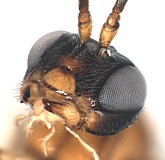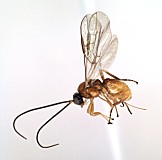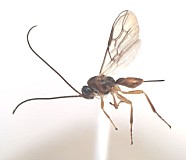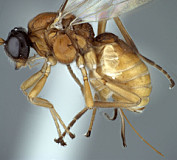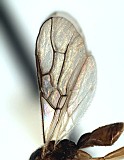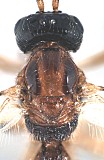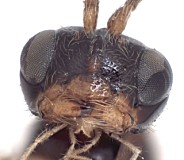Opius downesi Gahan, 1919
Remarks
See the Opius page for additional information. This is a color-variable species as indicated by the figures below.
Taxonomic History / Nomenclature
Diagnosis and Relationships
This species is characterized by the form of the clypeus and mandibles, which are very much like those found in members of the genus Biosteres. The clypeus is large, concealing the labrum (Fig. 8 above) and the mandibles have a large basal lobe or tooth (Fig. 1 above).
Distribution
Occurs all across northern U.S. and southern Canada, originally described from British Columbia.
Distribution
Native
North America (Cameron, E. 1941.; Thompson, W. R. 1953.)
British Columbia (Gahan, A. B. 1919.; Muesebeck, C. F. W., and L. Walkley. 1951.; Marsh, P. M. 1979.)
New Brunswick (Wharton, R. A. and Marsh, P. M. 1978.)
Connecticut (AliNiazee, M. T. 1985.; Maier, C. T. 1981.)
Michigan (Muesebeck, C. F. W. 1967.; Fischer, M. 1964.; Marsh, P. M. 1979.)
Wisconsin (Fischer, M. 1964.)
Biology / Hosts
Opius downesi has been reared from four species of Rhagoletis: Rhagoletis berberis, Rhagoletis pomonella, Rhagoletis tabellaria, and Rhagoletis zephyria (Wharton and Marsh 1978, Maier 1981, AliNiazee 1985).
Biological Control
See AliNiazee and Brunner (1986) for suggestions for possible use in management of apple maggot in Oregon.
